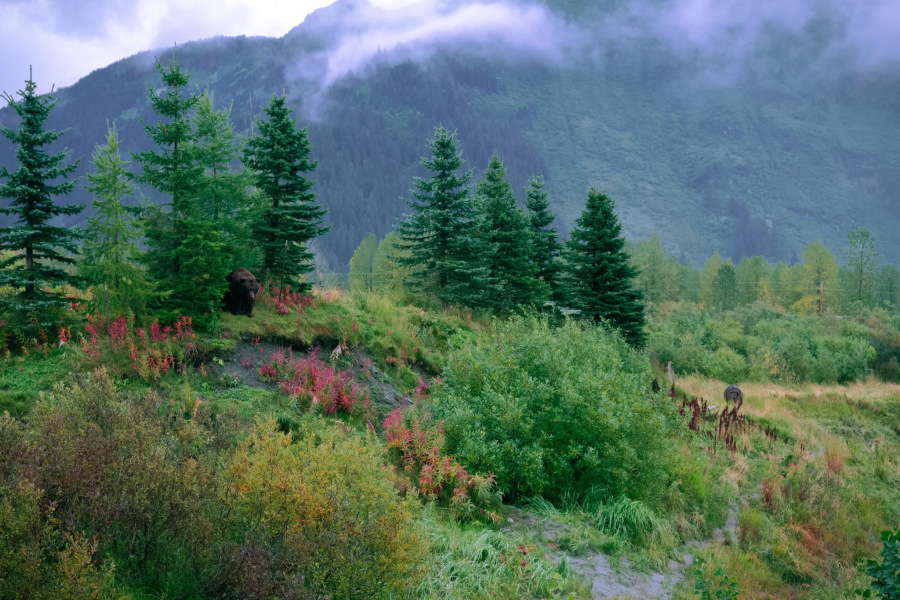From the very beginning America has been about religious freedom. That is why the puritans came to these shores. That is why we insist on the separation between church and state - because people should be free to worship as they choose without permission from or consultation with any authority other than their own consciences. It is, therefore, especially ironic that this very freedom which is so jealously protected in this republic is so often denied to the First Americans, to the indigenous peoples whom we remember (If we remember them at all) at Thanksgiving.
This freedom, like so many other freedoms, was systematically denied to American Indians in the nineteenth century. The country was fulfilling its manifest destiny by winning the west and, in so doing, it swept aside indigenous people who lived there - these "squalid savages" as President Theodore Roosevelt called them - who could not expect to keep this great continent as their playground. Once they had been stigmatized as savages, they could not expect civilized treatment, and they did not get it. They were penned up in reservations, where they suffered from hunger and disease, where their children were often taken from them to be weaned away from their "savage" parents, and where their religious ceremonies were prohibited.
It would offer some small comfort if we could be sure that these were nineteenth century aberrations. That was, after all, the heyday of imperialism all over the world, not just on the western plains. The imperialists, armed with the new and as yet undigested theory of evolution, were happy to find their racism conveniently supported (or so they thought) by science. They were confident that they represented the advanced stages of civilization and that is was therefore their right - even their duty - to civilize the "backward" peoples of the earth. On occasion they might have to destroy the "savages" in order to save them, but that was also thought to be just the way of the world.
Surely now, over a century later, we know better than that. Conditions on the reservations and in the remaining boarding schools have improved, though bitter memories live on for many American Indians in the present day. At the very least, we might console ourselves with the thought that in this more enlightened and tolerant age there is nothing to prevent American Indians from worshipping as they please in the United States of America. If we think this, then we are wrong.
Nowadays, the inhibition of American Indian worship does not come from authorities who wish to wean them away from their religious, but rather comes as a result of clashes between their cultures and ours. The American Indian Church, for example, solemnly and sacramentally invites it worshippers to take peyote during its ceremonies. Since peyote is a hallucinogen, the church has been persecuted for "drug use." Yet the ceremonial taking of peyote bears as much relation to what we normally think of as drug use as sipping communion wine does to alcoholism.
Even this is a minor issue, though, when compared to the central clash of ideas that inhibits American Indian religious freedom. American Indian religious consider the earth to be sacred, whereas the secular culture that surrounds them considers the earth to be real estate. Clearly, the entire earth could not be reserved by any people only for ceremonial use. The sacredness of the earth normally implies treating it and its products with respect and reserving certain sites for ceremonial purposes.
That is why the slaughter of the buffalo on the western plains was so devastating to the indigenous peoples who lived there. The buffalo hunters were encouraged to kill these animals in vast numbers because the Indian lived off them, and killing the buffalo was a way of destroying the Indians' resource base. The overkill of buffalo was considered by the Indian to be a sacrilege. Indians hunted the buffalo only as needed, using every bit of the animals - for meat, for tents, for glue, for twine. They depended on the buffalo and they acknowledged it, both practically and ceremonially.
The buffalo are all but gone now and even the Indians of the plains do not live by hunting them any more, but they still consider that worship at their sacred sites sustains their lives. The dilemma, then, is how to protect those sites from desecration and how to ensure that they are accessible to worshippers. This is made especially difficult by the history of relations between Indians and non-Indians in this country, which has been a long sage of outsiders seizing Indian lands, sometimes with the offer of monetary compensation. This problem can be more easily understood, perhaps, if we imagine what the reaction of Catholics would be if a foreign power seized the Vatican and offered a cash indemnity in exchange.
The fundamental issue here is that we have difficulty in understanding the idea of a sacred site which is simply an "unimproved" (the very word is significant) piece of earth. We certainly have difficulty in respecting it when it is only sacred to indigenous peoples who have been notoriously powerless to defend their rights. Sooner or later the desire to extract minerals, or to use the water or simply to establish recreational facilities in areas that the Indians consider sacred, tends to produce powerful lobbies that override indigenous religions and even lead to the flouting or repeal of our own laws.
All too often, when it comes to religious freedom, our society assumes that we can and must force Indians to accept our beliefs and our ways. This is exactly where Cultural Survival disagrees. There is no necessary incompatibility between indigenous worship and our own secular use of land. With tolerance and sensitivity, compromises can be worked out that allow indigenous peoples to maintain the sacredness of their sites, while the rest of us do our best (or our worst) with the enormous areas left over. It is hard for the strong to give up their ingrained habit of overpowering the weak, but it is essential if we are to make multiethnic societies like our own work with a minimum of civility. Article copyright Cultural Survival, Inc.



